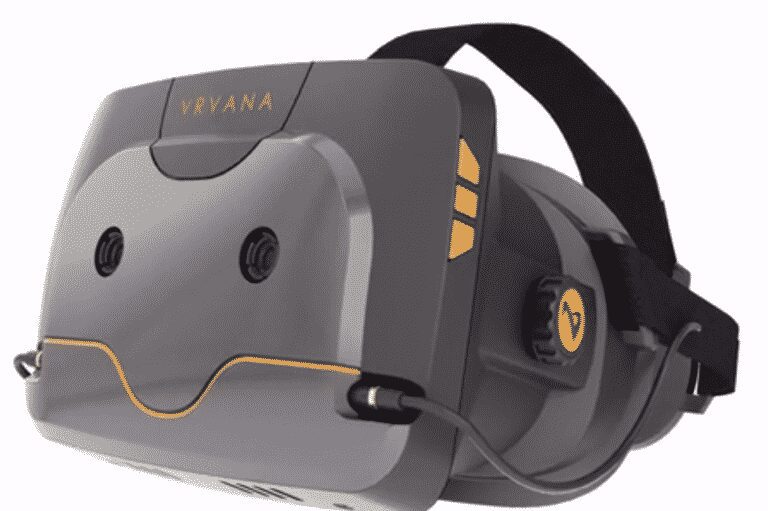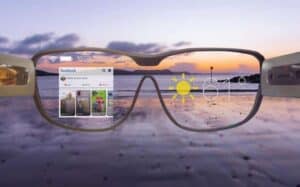Rumors continue to swirl around a release date for the new Apple Glasses. The AR or Mixed Reality wearable could be out as early as next year. Apple analyst Ming-Chi Kuo who has a better track record than most when it comes to peering behind the Apple wall of secrecy, sees them arriving in 2022. But the press is abuzz with Jon Prosser’s tweet that the new Apple Glasses will be out between March and June 2021.
I can’t believe I’m going against Kuo on this one… but I believe he’s wrong.
Apple Glasses are aimed for March-June 2021.
Also.
I’ve seen them.
They’re sleek as hell. 👀Will be showing you soon 🤫 https://t.co/0GaOYDA5N8
— Jon Prosser (@jon_prosser) May 15, 2020
Prosser is a frequent leaker though we can guarantee Apple didn’t invite him in for a personal preview. If he’s actually seen the new Apple Glasses as he claims, it’s through a soon to be ex-employee in Cupertino.
Unpacking the New Apple Glasses Rumors
According to Prosser, the glasses are “sleek as hell” and run off an iPhone. It’ll need an iPhone connection as anything sleek is not going to have it’s own battery – unless you’re looking at Google Glass type battery life. And that’s just not Apple.
According to MacRumors, a number of moves have been underway over the past year.
Apple in July 2019 moved Kim Vorrath, one of its software executives, over to the augmented reality headset division to “bring some order” to the team. Vorrath has overseen program management on the software development team for 15 years, and has been described as a “powerful force” making sure employees meet deadlines while also sussing out bugs.
And Apple is exploring a variety of implementations:
As for input methods, Apple is considering touch panels, voice activation, and head gestures, and a range of applications from mapping to texting are being prototyped. Virtual meeting rooms and 360-degree video playback are also concepts that are being explored.
Will We Also Get an AR/VR Headset?
We will see an AR wearable from Apple, but it could arrive any time over the next few years. But one intriguing rumor refuses to die: Apple will also do a virtual reality HMD.
According to MacRumors:
According to the latest rumors, Apple is working on an incredibly powerful AR/VR headset that’s not quite like anything else on the market. It is said to feature an 8K display for each eye that would be untethered from either a computer or a smartphone, and it would work with both virtual and augmented reality applications.
Rather than relying on a connection to a smartphone or a computer, the headset would connect to a “dedicated box” using a high-speed short-range wireless technology called 60GHz WiGig. The box would be powered by a custom 5-nanometer Apple processor that’s “more powerful than anything currently available.” At the current time, the box apparently resembles a PC tower, but it “won’t be an actual Mac computer.”
To use the headset, users will not need to install special cameras in a room to detect their location as with some available VR headsets. All of the technology will be built into the headset and the box.
The speculation about connecting through short-range wireless technology is intriguing. It gets around the tether issue for a standalone HMD, which even the Oculus Quest runs into with the Oculus Link cable. And it also overcomes the obstacle of having 5G access – yes, we know it’s amazing, and everyone will have it – but it’s a dream that’s years down the road for the vast majority of the world’s population.
Of course, this news doesn’t sync with the pronouncements from Tim Cook that the future belongs to augmented reality. But it jives with Apple’s acquisition strategy, which has gone far beyond AR startups to pull VR firms under its umbrella. That extends back to the acquisition of Vrvana in 2017, a company that was working on a combined AR/VR headset. And just last week, Apple confirmed that it had acquired NextVR, which has been working on live-streaming concerts and sporting events since 2016. NextVR’S 360 video service never gained traction but that may have been due more to the available headsets and bandwidth than its own platform.

To add another tantalizing element to these rumors, Apple may be partnering with Valve in the development of a new VR headset. One thing we know for certain: Apple is one of the few companies that could go up against the Facebook/Oculus VR juggernaut and win. Much as we love Valve and their headset, we’re not so sure they can pull this off on their own.
Is the Coronavirus Pandemic a Catalyst?
All this information remains as nothing more than rumors, so we feel a certain freedom to add our own to the mix. If Apple is pushing up its release date to 2021, could the Coronavirus be part of the reason why? We suddenly find ourselves in a “new normal,” a different world where everyone is looking for online solutions that are the equivalent of face-to-face experiences. The new Apple Glasses have been under development long before our global pandemic arrived, but Apple is savvy enough to sense the more substantive winds of change. And the lingering impact of the virus will still be with us in 2021.
AR Glasses that provided virtual meeting rooms would be a gamechanger for education, work, and entertainment. Nreal with its AR Glasses is already working on this with a partnership with Spatial, an innovative holographic collaboration platform. And Spatial is moving fast to reinvent itself as the Zoom of immersive experiences. Apple doesn’t shift corporate strategy according to the latest news, but the pandemic is turning into an economic and life-altering event across the globe.
Stay with us for updates on this rapidly changing environment.
Emory Craig is a writer, speaker, and consultant specializing in virtual reality (VR) and artificial intelligence (AI) with a rich background in art, new media, and higher education. A sought-after speaker at international conferences, he shares his unique insights on innovation and collaborates with universities, nonprofits, businesses, and international organizations to develop transformative initiatives in XR, AI, and digital ethics. Passionate about harnessing the potential of cutting-edge technologies, he explores the ethical ramifications of blending the real with the virtual, sparking meaningful conversations about the future of human experience in an increasingly interconnected world.

